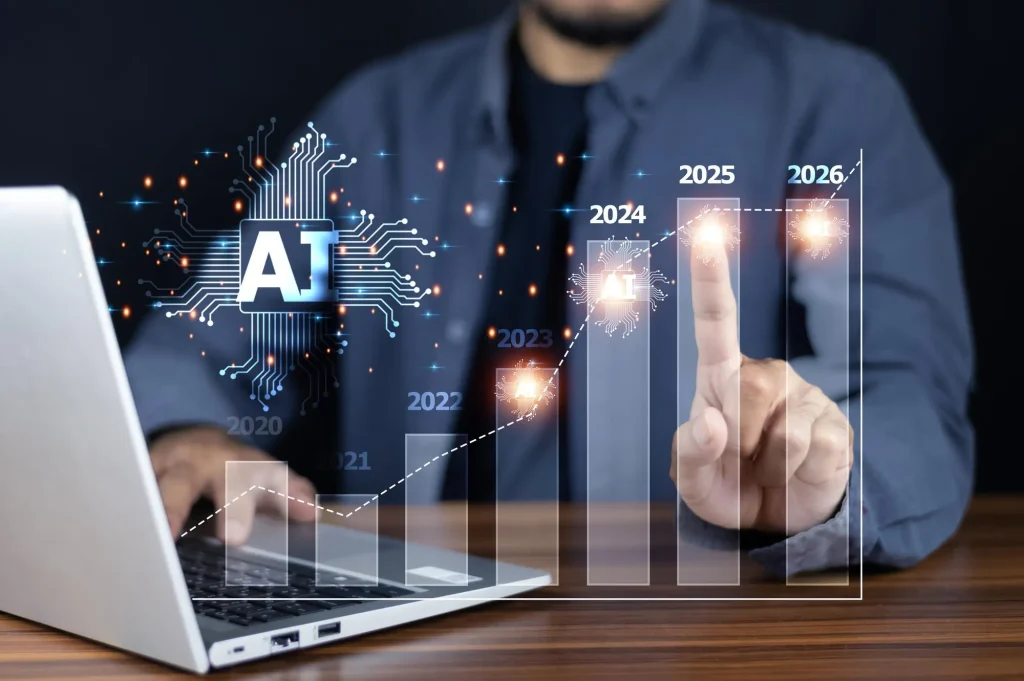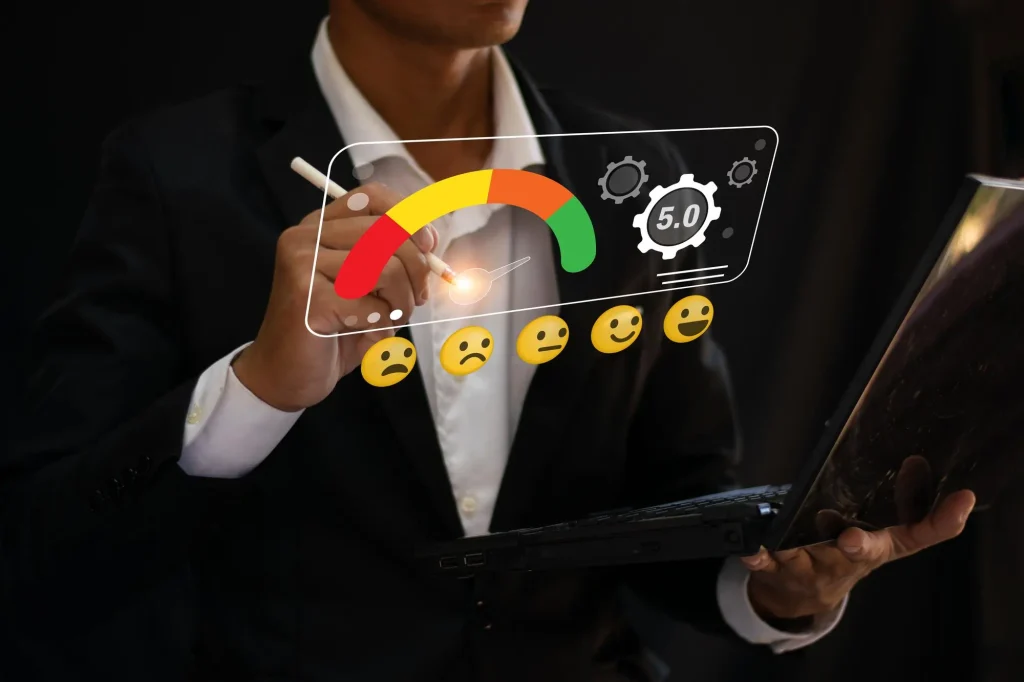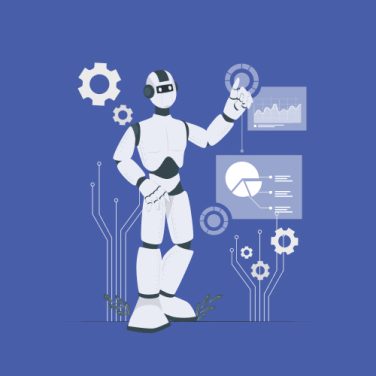In the dynamic realm of human resources, HR performance management stands as a cornerstone for aligning employee efforts with organisational goals.
This process is not merely an administrative task but a strategic imperative that ensures employees are meeting performance standards and are being developed for future roles.
Performance management involves setting clear performance expectations, consistently measuring progress, and providing feedback to employees.
Traditionally, performance management focused primarily on annual appraisals and formal evaluations. Managers and employees would convene once a year to discuss past performance and set objectives for the future.
However, this outdated paradigm is rapidly evolving. Contemporary HR practices emphasise values such as continuous feedback, real-time performance tracking, and alignment with broader organisational strategies.
AI and performance management

The evolution of the performance management cycle is now driven by the integration of Artificial Intelligence (AI). This technological revolution is transforming how performance management is executed within organisations.
AI enables HR teams to analyse vast amounts of data, generating insights that were previously inaccessible. AI-driven tools help identify employee strengths and weaknesses with precision, allowing for personalised development plans that support both individual and organisational growth.
The application of AI in performance management extends beyond mere data analysis. By using algorithms to predict performance trends, organisations can proactively address potential challenges and optimise workforce productivity.
This adoption of AI is becoming indispensable for organisations committed to remaining competitive in today’s fast-paced business environment.
Furthermore, AI fosters a culture of continuous improvement by facilitating agile methodologies similar to those used in software development.
This shift from periodic appraisals to ongoing assessments ensures that employees receive the guidance they need when they need it. The result is a more engaged and productive workforce, primed for achieving strategic objectives.
For HR professionals and organisational leaders looking to enhance their performance management processes, AI offers unparalleled opportunities for innovation. By leveraging AI, companies can transform their HR processes, paving the way for more informed and strategic decision-making.
This transformation not only aligns with current business needs but also prepares organisations to meet future challenges head-on.
AI-driven goal setting strategies
In today’s competitive business landscape, organisations seek to streamline their HR performance management process by integrating cutting-edge technologies.
AI plays a pivotal role in revolutionising the planning and goal-setting phase. This transformation is crucial for aligning individual objectives with overall business strategies and ensuring continuous improvement in employee performance.
AI’s power lies in its ability to process vast amounts of data, providing real-time insights into employee strengths and areas for development. Such capabilities allow HR professionals to abandon the one-size-fits-all approach and embrace more personalised goal-setting strategies.
By utilising advanced data analytics, managers can clearly identify where an employee excels and where they might require additional support.
This is where AI-driven methods shine. With predictive analytics, AI can foresee potential performance trends, helping managers to set achievable and aspirational targets.
These insights are not only based on past performance but are also predictive, giving a comprehensive view of likely future outcomes. Such foresight is invaluable, allowing organisations to proactively configure training programs or redistribute workloads as needed.
Machine learning algorithms further enhance this process by continuously learning from data inputs, refining their predictions, and assisting in crafting detailed, customised development plans. It enables an adaptive goal-setting environment that responds to evolving organisational needs and individual aspirations.
Implementing AI-powered systems like MiHCM fosters more strategic decision-making, as these tools align employee goals with enterprise objectives through precise analyses and recommendations.
Employees can visualise their career trajectories, thanks to automated feedback and clearly defined goals. This data-driven transparency increases job satisfaction and motivation, leading to improved performance metrics.
Moreover, AI effectively facilitates the establishment of SMART (Specific, Measurable, Achievable, Relevant, Time-bound) goals. These goals are aligned not just with company objectives, but also consider global business trends and industry benchmarks, thanks to the expansive data processing capabilities of AI systems.
The result is a performance management process that is agile, responsive, and synchronised with the larger business context.
In summary, the role of AI in HR performance management cannot be overstated. It enables a more nuanced and informed approach to goal setting, shifting the focus from rigid annual reviews to a more dynamic and responsive management process.
As businesses continue to integrate AI into their operational models, the synergy between human expertise and technological innovation will unlock new potentials in workforce productivity and engagement.
Benefits of continuous feedback systems

In the ever-evolving HR performance management process, one pivotal shift has been the transition from annual appraisals to continuous feedback systems.
This approach aligns employee activities with rapidly changing business objectives, promoting agility and adaptive performance improvements. The integration of AI into this model has heightened its efficacy, ensuring timely feedback and fostering a culture of transparency and engagement.
Continuous feedback loops enable managers and employees to share insights consistently, circumventing the limitations of traditional, periodic reviews. AI-driven systems can employ algorithms to monitor performance metrics in real-time, offering suggestions for immediate improvements.
This proactive approach is beneficial in addressing potential issues before they morph into significant challenges, facilitating a smoother performance management cycle.
This real-time feedback mechanism not only aids in enhancing team productivity but also empowers employees to take responsibility for their development. With AI analytics, performance data is distilled into actionable insights, enabling HR professionals to make informed, strategic decisions swiftly.
- Facilitates immediate performance enhancements: By analysing productivity trends regularly, AI highlights areas needing attention, allowing teams to adjust swiftly to performance demands.
- Strengthens manager-employee relationships: Consistent and constructive feedback fosters trust and openness, paving the way for more meaningful dialogues about career aspirations and organisational objectives.
- Increases engagement and satisfaction: When employees feel more connected through regular feedback, their sense of belonging and motivation to meet goals align more closely with company aspirations.
The link between AI-enhanced feedback systems and improved HR analytics cannot be overstated. Through predictive analytics, organisations can anticipate shifts in workforce performance, optimising resource allocation and training initiatives accordingly.
Moreover, the integration of real-time feedback systems within performance management ensures that the HR processes remain agile and adaptive. AI’s ability to parse through complex datasets and external market trends allows organisations to remain competitive in dynamic environments.
By aligning feedback mechanisms with strategic business goals, AI propels organisations towards achieving sustained performance improvements.
Embracing data-driven feedback systems augments the transformational potential of HR performance management. As employees receive specific, measurable, and achievable goals tied directly to their performance, they are more engaged and equipped to drive growth.
AI not only strengthens these feedback loops but also garners data to reinforce strategic decision-making, making performance management an integral part of business success.
The continuous performance management model, underpinned by AI, represents a significant advancement over its traditional counterpart.
By ensuring that feedback is timely, actionable, and relevant, AI streamlines the performance management lifecycle, promoting a more engaged and productive workforce well-suited for today’s fast-paced business landscapes.
Implementing data-driven strategies
Incorporating data analytics into the HR performance management process is a transformative strategy that helps drive performance improvements and enhance decision-making.
This integration is not merely an option but a necessity for organisations aiming to stay ahead in a competitive landscape. Data analytics allows for a granular understanding of workforce dynamics, facilitating more informed strategic decisions.
By leveraging advanced analytics, organisations can gain comprehensive insights into employee performance, enabling HR professionals to identify trends that might otherwise go unnoticed. Using this data, businesses can tailor performance management strategies to focus on enhancing high-performing teams and addressing the areas lacking efficiency.
One significant advantage of employing data analytics is the capacity to predict future performance outcomes. AI plays a crucial role in this predictive analysis by processing massive data sets to forecast trends and potential challenges.
Such predictive capabilities are invaluable for planning, allowing organisations to anticipate and mitigate issues before they escalate, thereby managing employee turnover more effectively.
A practical example of this is the utilisation of AI-powered HR analytics platforms like MiHCM. These platforms offer valuable insights by analysing workforce demographics and providing strategic guidance on performance management.
- Optimising talent management: Analytics highlight high-performing individuals and teams, guiding resources and training initiatives where they are most needed.
- Improving workforce engagement: By aligning employee roles with business strategies, data-driven approaches help boost morale and productivity.
- Enhancing strategic decision-making: Through comprehensive data analysis, businesses can adjust their performance management cycles to better reflect current and future organisational goals.
To truly harness the potential of HR analytics, organisations must develop strategies that incorporate continuous data collection and analysis into their performance management lifecycle. This approach ensures that data remains relevant and actionable, providing the foundation for adaptive HR processes that meet ongoing business needs.
Moreover, these analytics not only aid in internal workforce assessments but also serve as benchmarks against industry standards. By evaluating where the organisation stands concerning its competitors, HR leaders can make educated decisions on how to adapt their strategies for better alignment with market demands.
Companies equipped with a robust analytics framework can unlock the full potential of their workforce, ensuring they remain agile and responsive to both internal developments and external market trends.
As the performance management lifecycle evolves, the incorporation of data analytics ensures processes are not only efficient but also strategically aligned with broader business objectives. By transforming raw data into actionable insights, organisations can drive performance improvements, enhance decision-making, and ultimately, achieve sustained growth.
Best practices for integrating AI into HR processes
Implementing AI in performance management requires a strategic approach to ensure seamless integration and maximise benefits:
- Conduct a thorough evaluation of current processes: Before introducing AI, organisations should review existing performance management processes to identify areas for improvement.
- Establish clear objectives: Define what success looks like for the performance management cycle and set specific, measurable goals for AI implementation.
- Invest in manager and employee training: Equip managers with the skills needed to effectively utilise AI insights. Training ensures that both management and employees can benefit from AI-driven feedback and development plans.
- Ensure transparency and ethical compliance: Develop guidelines to navigate ethical considerations and protect against AI-induced biases during performance reviews.
- Embrace continuous feedback: Transition from annual reviews to regular feedback loops, leveraging AI to provide real-time insights that facilitate immediate performance enhancements.
- Monitor and adapt: Regularly assess the effectiveness of AI tools and strategies, making adjustments based on feedback and changing business needs.
Setting these best practices into motion not only ensures a smoother transition to AI-enhanced performance management but also aligns with the strategic goals of modern organisations seeking to outperform their competitors financially.
Impact on organisational effectiveness
AI’s integration into performance management cycles is a game-changer, supporting strategic decision-making and unlocking employee potential. Organisations like those mentioned above are already witnessing these positive impacts:
- Improved employee engagement: AI facilitates personalised career path development and continuous learning opportunities, thus boosting employee morale and retention rates.
- Increased productivity: By aligning employee efforts with organisational goals through data-driven strategies, businesses can achieve higher levels of productivity and efficiency.
- Data-driven HR decisions: HR professionals gain deeper insights into workforce trends, enabling more targeted and effective talent management strategies.
As organisations continue to explore the potential of AI within the HR performance management lifecycle, adhering to these examples and best practices ensures a structured and effective transition. Such a systematic approach not only transforms the workplace but also positions companies to thrive in a rapidly evolving business landscape.



